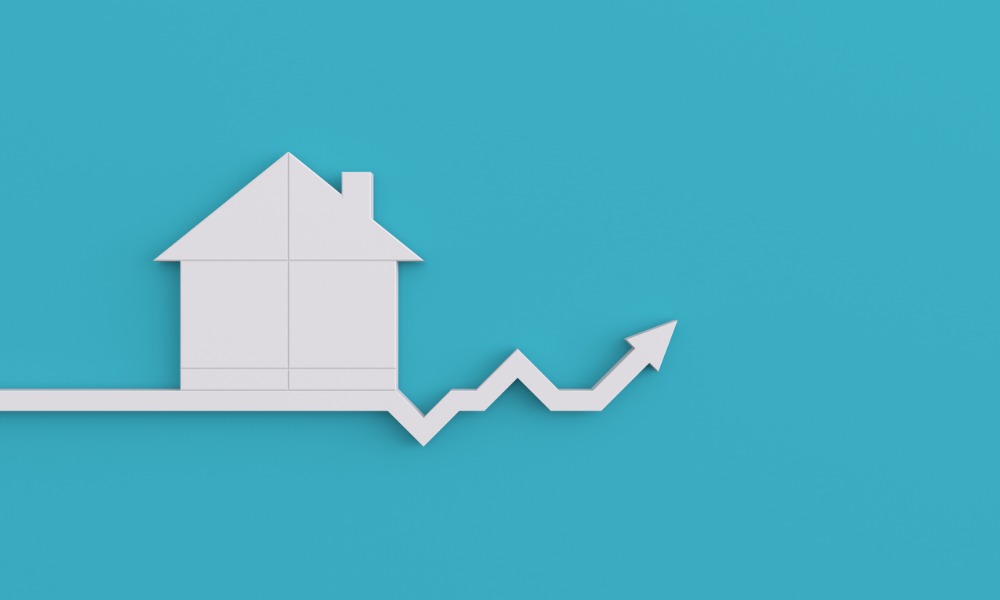"But it wasn't much of a bounce"

Pending home sales made a slight comeback in August, but the improvement was minimal after reaching near-record lows.
The Pending Home Sales Index (PHSI) nudged up by 0.6%, a modest uptick after months of sluggish market activity, according to the National Association of Realtors (NAR). Despite this small rebound, the overall housing market remained tepid, with transactions still significantly below typical levels.
The PHSI, which tracks contract signings for home purchases, rose to 70.6 in August, marking a faint recovery from previous lows. However, the year-over-year figures paint a less optimistic picture, showing a 3% drop in pending transactions compared to last August. Though there was some regional variation, with the Midwest, South, and West showing slight gains, the Northeast lagged behind, registering a monthly decline.
“A slight upward turn reflects a modest improvement in housing affordability, primarily because mortgage rates descended to 6.5% in August,” NAR chief economist Lawrence Yun said in the report. “However, contract signings remain near cyclical lows even as home prices keep marching to new record highs.”
Kate Wood, mortgage expert at NerdWallet, pointed out that August’s buyers were grappling with more than just high home prices and limited inventory.
“Pending home sales once again rebounded after a record low, but it wasn’t much of a bounce,” said Wood. “Potential August buyers were dealing with the same old story — high prices, low inventory — but had other reasons to hold off, too. Even though mortgage interest rates had been going down since spring, buyers may have been waiting on a rate cut from the Federal Reserve. It’s also possible that the uncertain atmosphere of the Presidential election is adding to buyers’ hesitation.”
The slow pace of the housing market has left many buyers and sellers stuck in limbo. Odeta Kushi, deputy chief economist at First American, explained that although rates fell, they didn’t fall far enough to lure back a large number of buyers.
“Challenging affordability conditions and historically low inventory persist as significant barriers for home buyers,” Kushi noted.
“On a more optimistic note, purchase mortgage applications – another leading indicator of home sales – are trending up in September, as mortgage rates moved lower, suggesting that the once frozen housing market may be starting to thaw.”
In the meantime, regional trends were mixed. The Northeast was hit the hardest, with its PHSI falling 4.6% from July and 2.2% from the same time last year. The West, on the other hand, posted a slight year-over-year increase of 2.7%, while the Midwest and South saw smaller gains.
Gabe Abshire, CEO of Move Concierge, shared a cautiously optimistic outlook, stating: “Home sales are in a brighter spot than the numbers suggest. While new home sales are down, they aren’t down as much as expected.
“Pending home sales will also creep back up as more families will look to buy in the next six months when their rental contracts come to a close. Affordability will remain a challenge, but hopefully, interest rates will continue to drop, enticing many more renters to put in offers on a new home.”
Read next: How long before the US mortgage market heats up again?
Although the market remains sluggish, Yun also said that falling mortgage rates could improve the situation in the coming months.
“The Federal Reserve does not directly control mortgage rates, but the anticipation of more short-term interest rate cuts has pushed long-term mortgage rates down to near 6% in late September,” he said. “On a typical $300,000 mortgage, that translates to approximately $300 per month in mortgage payment savings compared to a few months ago.”
Stay updated with the freshest mortgage news. Get exclusive interviews, breaking news, and industry events in your inbox, and always be the first to know by subscribing to our FREE daily newsletter.



